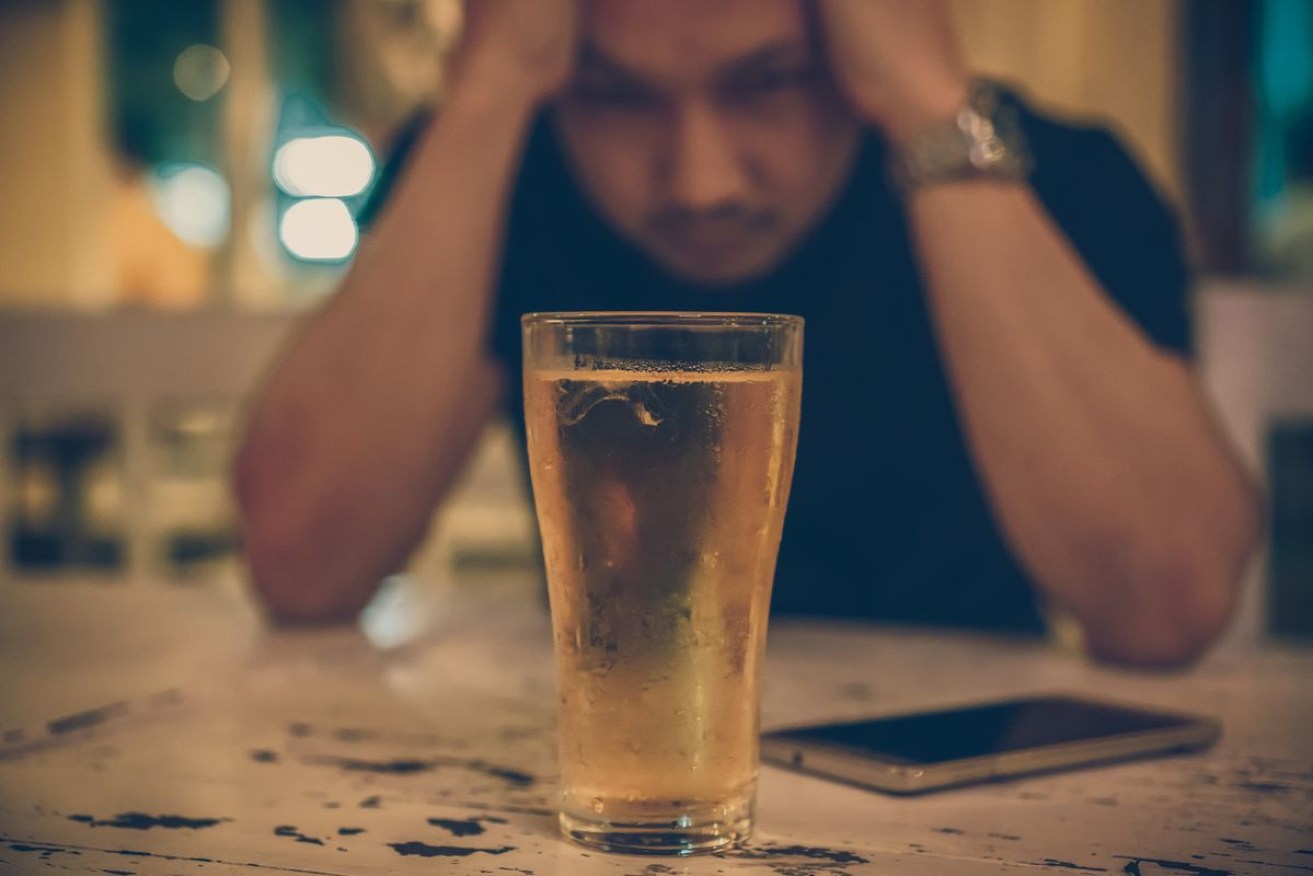Leaked draft of the National Alcohol Strategy shows why Australia can’t stop drinking

Australia's heaviest drinkers account for a staggering amount of the nation's alcohol consumption, research shows. Photo: Getty
Australia’s plan for tackling alcohol abuse and harm has been compromised because of meddling from the alcohol industry, health experts have warned.
Background Briefing has seen a leaked copy of the latest draft National Alcohol Strategy, which is supposed to be a national blueprint for tackling alcohol-related harm.
Some state and territory ministers are so concerned by the involvement of the alcohol industry in the new draft of the strategy, they are now refusing to endorse it.
The impasse is presenting an obstacle for Federal Health Minister Greg Hunt, as he seeks to finalise the long-awaited blueprint.
“I’m not sure why we need to see it watered down,” Western Australian Health Minister Roger Cook said.
“Minister Hunt now needs to re-examine his conscience.”
ACT Health Minister Rachel Stephen-Smith said industry inclusion in strategy governance “presents a commercial conflict of interest”.
She added that changes from the Commonwealth had “significantly reduced the quality of the document”.
Alcohol and addiction experts have said the version sitting with ministers is significantly weaker than the earlier versions they worked on.
“The alcohol industry consistently has been able to be involved in the policy-making and that’s why we don’t have effective alcohol policies in Australia,” said Peter Miller, an addiction expert from Deakin University.
When the draft strategy was released in December 2017 for public consultation, it did not include direct input from the alcohol industry.
But after the industry complained of being excluded from the process, Mr Hunt invited representatives to a roundtable discussion in July 2018 with policy-makers and health experts.
A spokesman for Mr Hunt said the office expected the strategy to be finalised soon.
“The Morrison Government is committed to reducing alcohol-related harm for all Australians through a range of measures,” he said.
What’s the difference? Defining Australia’s drinking culture
The original draft of the strategy said the alcohol industry “[would] not be eligible for membership of the reference group [the group that helps formulate policy]”.
“Australia does not support any ongoing role for industry in setting or developing national alcohol policy,” it said.
Both those references have been deleted from the leaked draft.
The original draft also talked about Australia’s “alcohol culture” as contributing to “increased risk of serious harm and the development of harmful drinking patterns”, and mentioned “public figures are glorified for drinking alcohol”.
The new draft states: “Alcohol is an intrinsic part of Australian culture and it plays a central role in most people’s social lives.”
This first draft also focused on “challenging perceptions of risk among Australians about safe drinking levels, including in relation to health impacts”.
But the revised draft instead focuses more on educating Australians or measures to prevent “excessive alcohol consumption” and “excessive drinking”.
Professor Miller says it ignores the harm caused by regular alcohol consumption.
“That our governments and bureaucrats aren’t pushing that message clearly in a National Alcohol Strategy is frightening,” he said.
The changes reflect common alcohol industry talking points, according to Professor Miller.
“They [the industry] push that all the time,” he said.
“It’s a way of normalising. It’s a way of saying, ‘look, there’s no problem here’.”
Health advocacy group the Foundation for Alcohol Research and Education (FARE) agrees.
“So these industries are well schooled in how to bring pressure to bear on governments. It’s about the donations, but it’s also about soft power and it’s about hard power,” FARE chief executive Michael Thorn said.
But Alcohol Beverages Australia does not consider itself a lobby group.
Instead the chair Bryan Fry says it helps provide “good sound science and good recommendations to how the industry is governed”.
He also thinks the alcohol industry should be involved in helping develop the National Alcohol Strategy.
“We believe that the second draft that sits at the moment that does have consultation in there is much stronger,” Mr Fry said.
We make no apologies by actually wanting to be involved in the consultation process of something that affects our industry so widely, given the fact that we have such a large economic contribution to the country.”
Another concern is that the revised strategy does not adequately deal with alcohol advertising, particularly in relation to sport, and the emerging issue of targeted digital marketing.
“This is no longer the kind of mass advertising that captures everybody,” FARE’s Mr Thorn said.
“This is very specific marketing that is directed at individuals’ preferences, because we have these profiles now that Facebook and Google and other digital platforms have built up about us. And these are the sorts of areas where government needs to be getting active now.”
Why is the strategy important?
A 2013 study found alcohol costs Australia about $14 billion a year in public spending on the health and legal systems, as well as costs of crime, productivity loss and road accidents.
Alcohol is also estimated to kill about 6000 people in Australia every year and according to data from the Australian Institute of Health and Welfare, it accounts for up to 15 per cent of emergency admissions.
Doctors at the alcohol and detox Gorman unit at St Vincent’s Hospital are at the front line. More than 50 per cent of clients come in for alcohol withdrawal.
“Because of the risk of withdrawal and seizures and things like that, we often recommend that people don’t try and cease drinking before coming in,” nurse manager Rachel Middleton explains.
The process of detoxing can be severe – even life-threatening.
“If they try and stop suddenly, they could have acute withdrawals at home, they could have withdrawal seizures,” she says.
Some people are so drunk they arrive in wheelchairs, while other patients have even tried to drink hand sanitiser just to get a quick buzz.
Stacey (not her real name) is a former patient at the Gorman unit. While there, she thought she was going to die.
“I was at risk of seizures, I was not a well person. My kidneys were shutting down. I wasn’t urinating. I was very, very, very sick,” she says.
Stacey, who is in her mid-30s, has been sober since spring last year but says: “I’m well aware I can relapse at any time.”
She has also been addicted to ice, but says coming off alcohol was far harder.
“I can’t tell you how quickly that glass of wine then turned into a bottle a night, and then two bottles a night, and then vodka and then … it’s three years of trying to get sober.”
Breaking the habit has been difficult in a country where alcohol in ubiquitous, Stacey adds.
“I do think that society could just maybe not flaunt it as much. Not sort of make alcohol as a happiness potion.”








